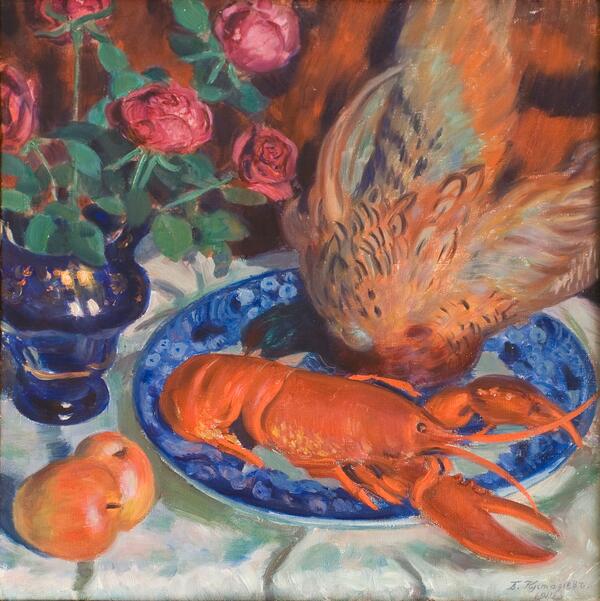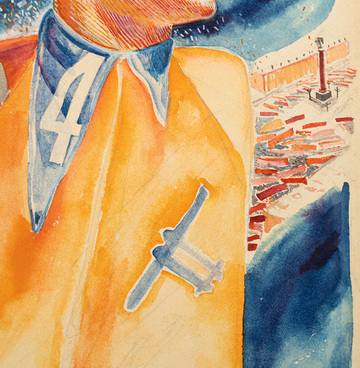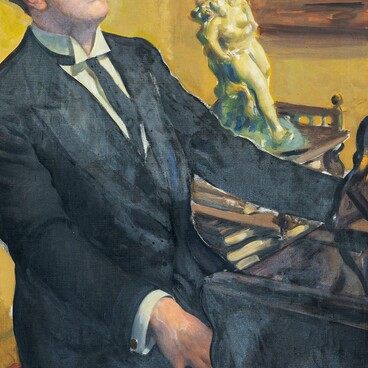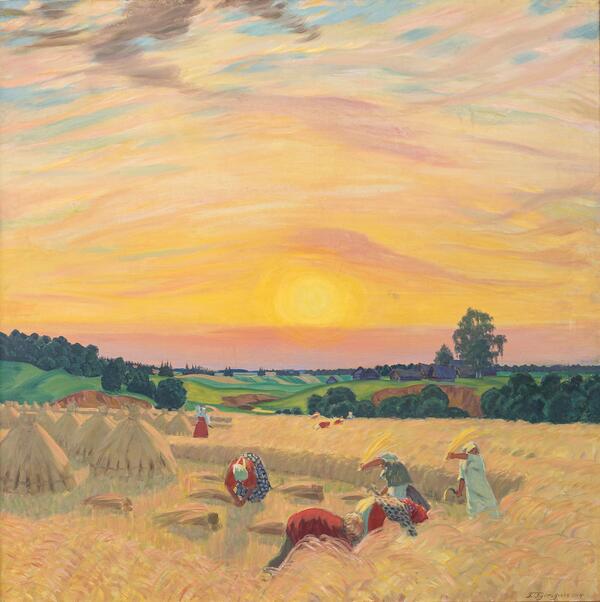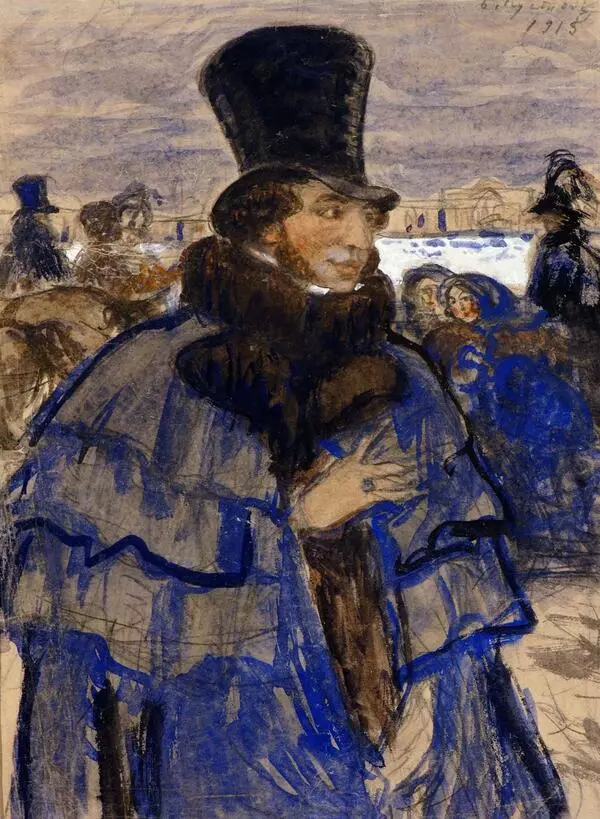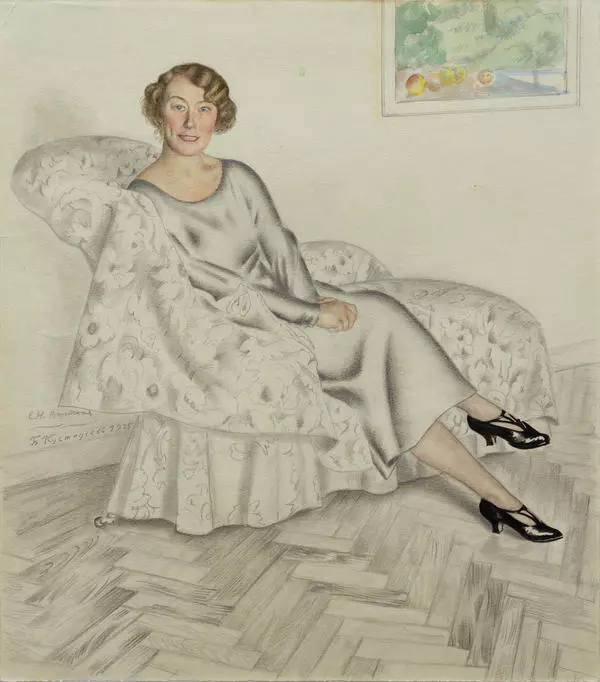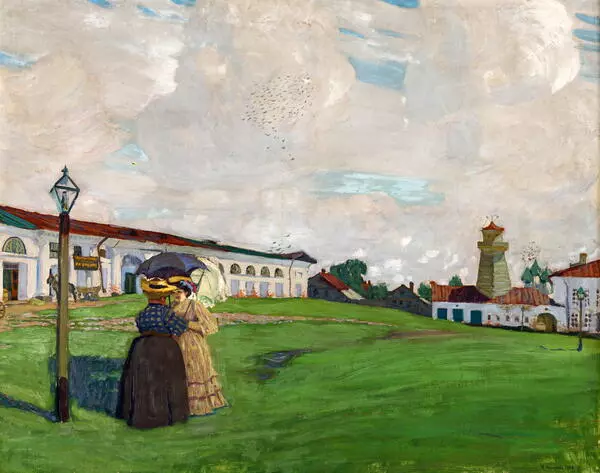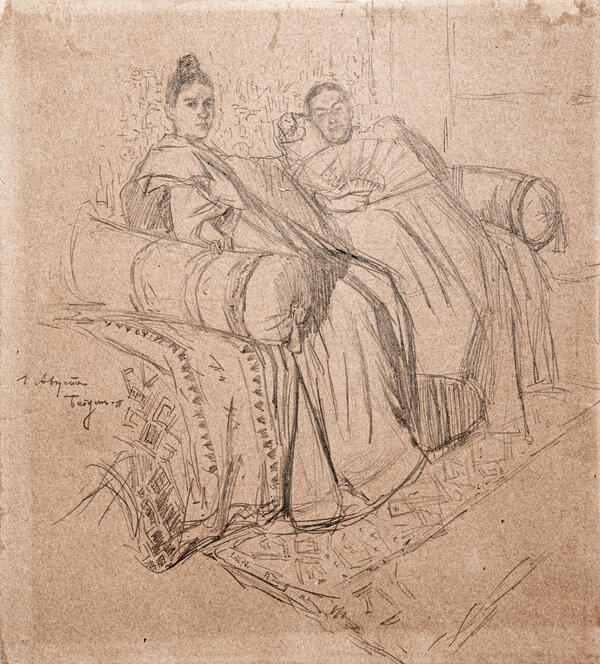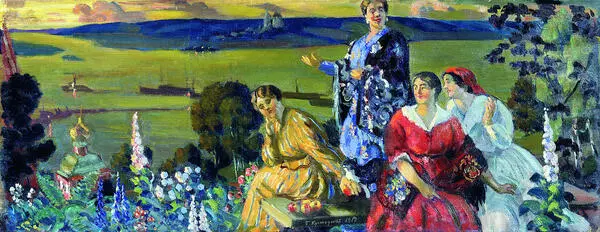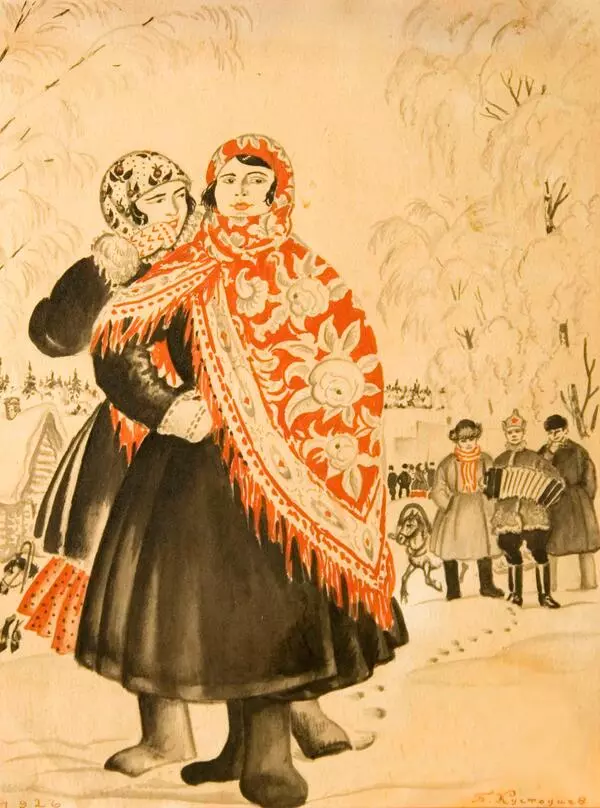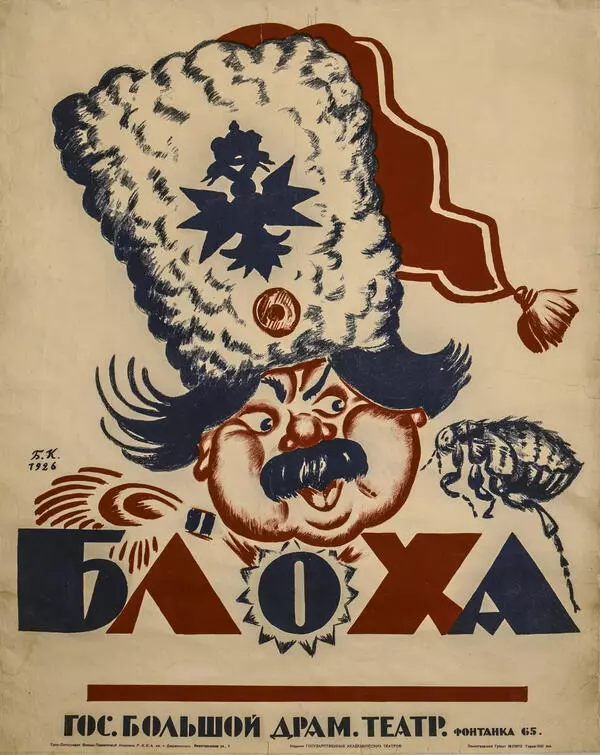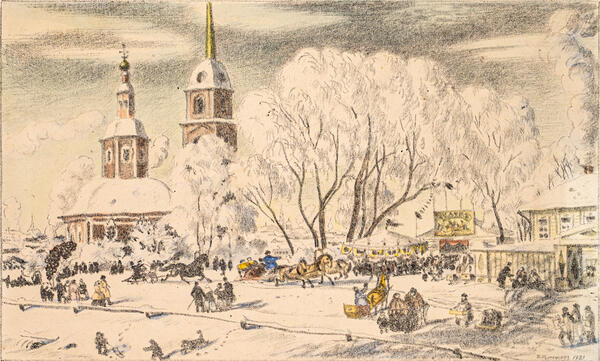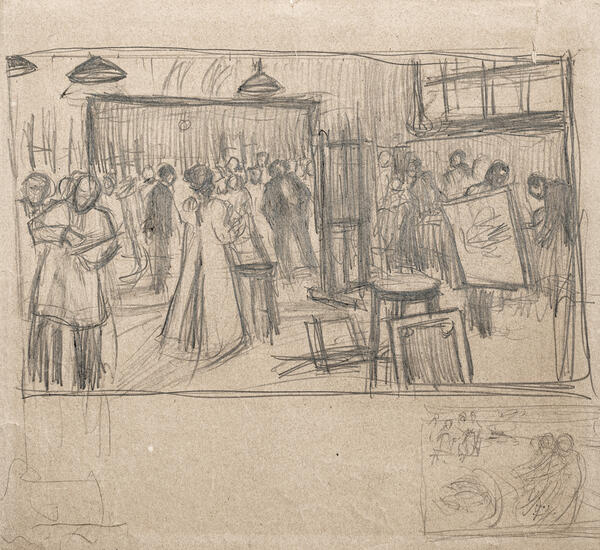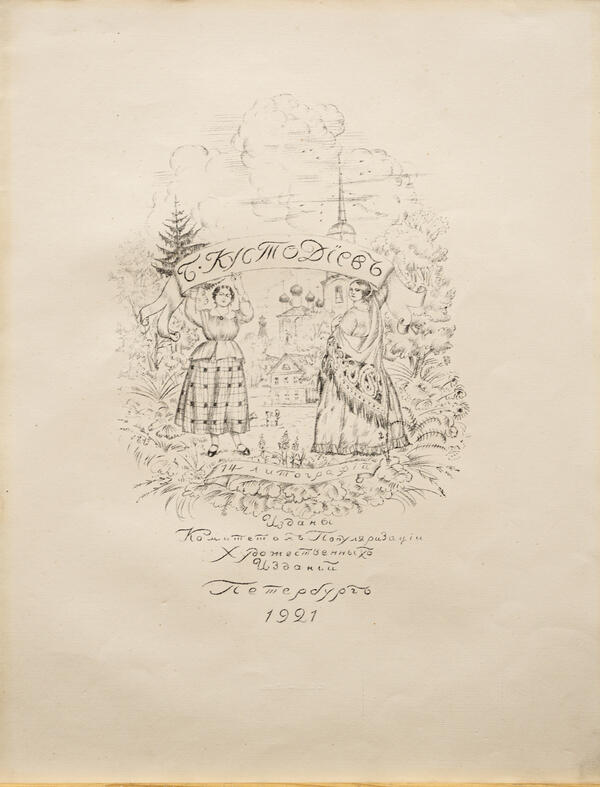“Still Life with Pheasant” is a noteworthy work in Boris Mikhailovich Kustodiev’s oeuvre, as he rarely worked in this genre.
The artist is renowned as a brilliant portraitist and an outstanding creator of genre scenes, depicting festivities, holidays, and fairs. Kustodiev’s still-lifes can be counted on the fingers of one hand: “Apple and The Hundred-Ruble Note” (1916), “Shells” (1918), and floral still-lifes — “Flowers on the Balcony Overlooking the Mountain” (1912), “Finland Bouquet” (1918) and others.
“Still Life with Pheasant” creates a festive and colorful image of the material world. The painter shows the contrasts of cobalt and various shades of red and enjoys solving the difficult artistic task of conveying on a small canvas the balance of various textures of the objects that make up the still life. The clarity of glass and density of porcelain, tender rose petals and tough shiny surface of a pair of apples, fluffy plumage of an unplucked pheasant and glossy lobster shell… The master employs various painting techniques, using a play of light and shadow, a variety of tones in chosen colors, and pronounced strokes of different lengths, shapes, and directions. The main color motif of this work — a play of blue and red tones — enhances the decorative nature of the still life.
It is worth paying attention to the objects chosen by the artist for the work. Lobsters, pheasants, and roses are not ordinary things to include — they all bear the stamp of sophistication and exclusivity and were hard to come by in a common home of the early 20thcentury. Such a choice could be explained by the customer’s preferences, or this could be a kind of statement by the painter, who by that time had already become famous and was doing quite well financially. Another interesting choice is that Kustodiev “cuts off” the edge of the image, intentionally making the composition denser and bringing objects closer to the viewer by placing many items in a fairly tight space.
The work was commissioned by the art collector Otto
Jacob Wiblinger, for whom Kustodiev had earlier painted “Poetry” (1908). The
latter is also exhibited in the painting hall of the Boris Mikhailovich
Kustodiev House Museum.

